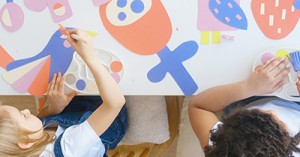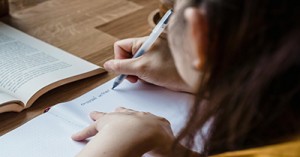Here’s an educator-friendly EYLF V2.0 Reference Sheet designed for quick use in planning, documentation, and reflection. It’s structured to support intuitive linking between observations and outcomes, with simplified language and examples to spark educator insight.
Outcome 1: Children have a strong sense of identity
Focus Areas:
- Secure, confident, and included
- Autonomy and agency
- Interactions with empathy
- Recognition of achievements
Examples:
- Separates confidently from family
- Chooses own resources and activities
- Expresses emotions and needs
- Celebrates own and others’ successes
Outcome 2: Children are connected with and contribute to their world
Focus Areas:
- Community participation
- Respect for diversity
- Care for environment
- Social responsibility
Examples:
- Engages in cultural celebrations
- Shows kindness and fairness
- Helps with routines and cleanup
- Notices and discusses nature
Outcome 3: Children have a strong sense of well-being
Focus Areas:
- Physical health and safety
- Emotional regulation
- Resilience and self-care
- Movement and coordination
Examples:
- Names and manages feelings
- Tries again after setbacks
- Practices hygiene independently
- Moves confidently in outdoor play
Outcome 4: Children are confident and involved learners
Focus Areas:
- Curiosity and inquiry
- Problem-solving and persistence
- Creativity and imagination
- Transfer of knowledge
Examples:
- Asks “why” and “how” questions
- Experiments with materials
- Engages in pretend play
- Applies past learning to new tasks
Outcome 5: Children are effective communicators
Focus Areas:
- Verbal and non-verbal expression
- Literacy and numeracy foundations
- Symbolic representation
- Digital and multimodal tools
Examples:
- Uses descriptive language
- Recognises letters and numbers
- Draws to express ideas
- Engages with books and stories
How to Use This Sheet
- Use as a checklist during observations
- Link indicators to summative assessments
- Embed into planning cycles and documentation tools
- Support educator reflection and team discussions
EYLF V2.0 Reference Sheet – Babies, Toddlers & Preschoolers
Babies (0–18 months)
| Outcome | Indicators | Examples |
|---|---|---|
| 1. Identity | Feels safe with familiar adults | Settles with key educator, responds to name |
| 2. Connectedness | Begins to notice others | Watches peers, smiles during group songs |
| 3. Well-being | Expresses needs through cues | Cries when hungry, reaches for comfort |
| 4. Learning | Explores through senses | Mouths objects, watches cause-effect toys |
| 5. Communication | Uses gestures and sounds | Babbles, points, imitates facial expressions |
Toddlers (18 months–3 years)
| Outcome | Indicators | Examples |
|---|---|---|
| 1. Identity | Shows independence | Chooses toys, says “me do it” |
| 2. Connectedness | Begins cooperative play | Shares materials, joins group routines |
| 3. Well-being | Expresses emotions verbally | Says “I’m sad,” seeks comfort |
| 4. Learning | Repeats actions to learn | Builds towers, explores textures |
| 5. Communication | Uses simple sentences | Names objects, sings familiar songs |
Preschoolers (3–5 years)
| Outcome | Indicators | Examples |
|---|---|---|
| 1. Identity | Expresses preferences and ideas | Chooses roles in play, shares opinions |
| 2. Connectedness | Understands fairness and inclusion | Invites others to play, discusses differences |
| 3. Well-being | Manages transitions and emotions | Uses calming strategies, names feelings |
| 4. Learning | Investigates and problem-solves | Asks “why,” experiments with materials |
| 5. Communication | Engages in storytelling and literacy | Retells events, uses drawing to express ideas |
Educator Tips
- Use this sheet to guide observations and link to summative assessments
- Adapt language for family-friendly documentation
- Embed indicators into planning cycles and reflective practice
- Use icons or colour coding for visual learners and team displays
Further Reading
How Children Achieve EYLF Learning Outcomes Version 2.0
Free EYLF Version 2.0 Posters and Cheat Sheets
EYLF Principles & Practices Cheat Sheet







 Here is the list of the EYLF Learning Outcomes that you can use as a guide or reference for your documentation and planning. The EYLF
Here is the list of the EYLF Learning Outcomes that you can use as a guide or reference for your documentation and planning. The EYLF The EYLF is a guide which consists of Principles, Practices and 5 main Learning Outcomes along with each of their sub outcomes, based on identity,
The EYLF is a guide which consists of Principles, Practices and 5 main Learning Outcomes along with each of their sub outcomes, based on identity, This is a guide on How to Write a Learning Story. It provides information on What Is A Learning Story, Writing A Learning Story, Sample
This is a guide on How to Write a Learning Story. It provides information on What Is A Learning Story, Writing A Learning Story, Sample One of the most important types of documentation methods that educators needs to be familiar with are “observations”. Observations are crucial for all early childhood
One of the most important types of documentation methods that educators needs to be familiar with are “observations”. Observations are crucial for all early childhood To support children achieve learning outcomes from the EYLF Framework, the following list gives educators examples of how to promote children's learning in each individual
To support children achieve learning outcomes from the EYLF Framework, the following list gives educators examples of how to promote children's learning in each individual Reflective practice is learning from everyday situations and issues and concerns that arise which form part of our daily routine while working in an early
Reflective practice is learning from everyday situations and issues and concerns that arise which form part of our daily routine while working in an early Within Australia, Programming and Planning is reflected and supported by the Early Years Learning Framework. Educators within early childhood settings, use the EYLF to guide
Within Australia, Programming and Planning is reflected and supported by the Early Years Learning Framework. Educators within early childhood settings, use the EYLF to guide When observing children, it's important that we use a range of different observation methods from running records, learning stories to photographs and work samples. Using
When observing children, it's important that we use a range of different observation methods from running records, learning stories to photographs and work samples. Using This is a guide for educators on what to observe under each sub learning outcome from the EYLF Framework, when a child is engaged in
This is a guide for educators on what to observe under each sub learning outcome from the EYLF Framework, when a child is engaged in The Early Years Learning Framework describes the curriculum as “all the interactions, experiences, activities, routines and events, planned and unplanned, that occur in an environment
The Early Years Learning Framework describes the curriculum as “all the interactions, experiences, activities, routines and events, planned and unplanned, that occur in an environment


